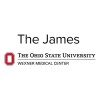
Survival After Emergency Laparotomy in Octogenarians
AbdomenAcute3 moreIn this single-center retrospective study we wanted to investigate mortality and postoperative complications after emergency laparotomy performed in patients aged 80 years or above.

Inter-rater Reliability of the Clinical Frailty Scale in a Swedish Emergency Department Setting...
FrailtyFrailty is a common clinical syndrome in older adults, which may be assessed through various assessment tools. One frequently used tool is the Clinical Frailty Scale (CFS) which potentially can be adopted for daily use in the Emergency Department and has been appraised for reliability to some extent, but have so far not been evaluated in the Swedish emergency care context. The purpose of this study is to evaluate the inter-rater reliability of the Clinical Frailty Scale (CFS) in a clinical Swedish Emergency Department (ED) setting. Members of multidisciplinary emergency care teams will conduct the assessments individually.

Preemptive Use of Convalescent Plasma for High-risk Patients With COVID-19
Covid19Immuno-Deficiency1 moreConvalescent plasma therapy has been recognized as safe and plasma transfusion is routinely used in clinical practice. A recent study showed that early administration of convalescent plasma can decrease the risk of complications in specific high-risk population. The aim of the present study is to offer convalescent plasma therapy to immunocompromised patients and older adults in the early phase of a SARS-Cov-2 infection in order to accelerate viral clearance and prevent complication

Approaches and Metrics in Fraily Patients During COVID-19 Era
FrailtyOncology1 moreThe COVID-19 pandemic started in December 2019 in Wuhan, the Chinese province of Hubei. Compared to the period of the first epidemic wave (March to May 2020), in the period of the second epidemic wave (October 2020 to July 2021), deceased people have a more significant clinical complexit, as demonstrated by the higher number of comorbidities.The need to allocate significant amounts of healthcare resources to the COVID-19 emergency, deferral of routine healthcare visits, and invitation to avoid medical controls, if not strictly necessary, may have led to interruptions of disease management undersupply of chronic treatments. Consequently, the health status of patients with chronic pathologic conditions have worsened during and beyond the crisis. Patients with cancer, autoimmune disease, and immune deficiencies represented populations with varying immunocompetence, which made translate into higher susceptibility to SARS-CoV-2 and, for this reason, we defined them as frail populations.The main goal of the study was to propel the field of COVID-19 impact on particularly vulnerable categories of patients. The findings of this study could aid in determining the conditions under which healthcare organizations must operate in the event of a pandemic in order to protect patient's rights to care.

Validity of an App to Detect Frailty and Sarcopenia Syndromes in Elderly
SarcopeniaFrailty Syndrome3 moreFrailty and sarcopenia are two age-related syndromes which can result in adverse health-related events. The combination of both is more predictive of mortality than either condition alone. These conditions can be reversed through an early detection and appropriate interventions. Nevertheless, scientific community highlights the lack of cheap, portable, rapid and easy-to-use tools for detecting frailty and sarcopenia in combination. The aim of this study is to validate an iPhone App to detect frailty and sarcopenia syndromes in community dwelling older adults. This is a protocol study of a retrospective diagnostic test accuracy study which will include at least 400 participants older than 60 years recruited from elderly social centers of Murcia city. Researchers will recollect data of health status, dependency, cognitive status, and functional capacity of the participants. The index test will consist in the measurement of muscle power exerted during a single Sit-to-stand through an App (iPhone), combined with calf and mid-upper arm circumference. The reference standard will be frailty syndrome and sarcopenia assessed according to Fried's phenotype and to the European Working Group on Sarcopenia in Older People 2 (EWGSOP2) (2019) recommendations, respectively. Sensitivity, specificity, positive predictive value, negative predictive values, and area under the curve will be reported.

Prognostic Impact of Frailty Assessed by Edmondon in Elderly Patient Undergoing Cardiac Surgery...
Elective Cardiac SurgeryThe score on the Edmonton frail scale will be recorded in 250 consecutive patient aged of 75 years or more and undergoing elective cardiac surgery. In those patients the investigators will also record the ITU length of stay, the hospital length of stay, the incidence of complications, the ability to be discharged home and to live independently at postoperative day 30. The ability of the Edmonton score to predict complication, prolonged hospital and ITU length of stay as well as loss of autonomy at discharge and day 30 will be assessed.

Frailty: Prevalence and Response to Left Ventricular Assist Device Therapy in Older Heart Failure...
Systolic Heart FailureThis is an observational study evaluating changes in frailty and associated impairments in older heart failure patients receiving left ventricular assist device therapy.

Comprehensive Frailty Assessment
MyelomaMultiple2 moreThe purpose of this research study is to describe a patients' fitness before and after treatment (whether that treatment be chemotherapy or a transplant). Fitness is a way of measuring a patient's current quality of health. With surveys, questionnaires and blood tests, we hope to create a tool that will give a good picture of patients' ability to tolerate treatment. In the future, we hope to devise the best treatment for a patient based on their "fitness".

Physical Activity for Improving Quality of Life and Reducing Frailty in Advanced Age
AgingIndividuals of advanced age undergo both physical and cognitive deterioration. The aim of this study is to explore the connection between level of physical activity and health parameters, quality of life, and frailty.

Normative Data of Dynamic Gait Index and 5 Time Sit to Stand Test Among Elderly Population
FallOld Age; DebilityThe goal of this observational study is to measure the normative data for dynamic gait index and 5 time sit to stand test in elderly population. This study aimed for to take normative measurement of dynamic gait index and five time sit to stand test among elderly population and to compare the preliminary values of above mentioned tests with age.
